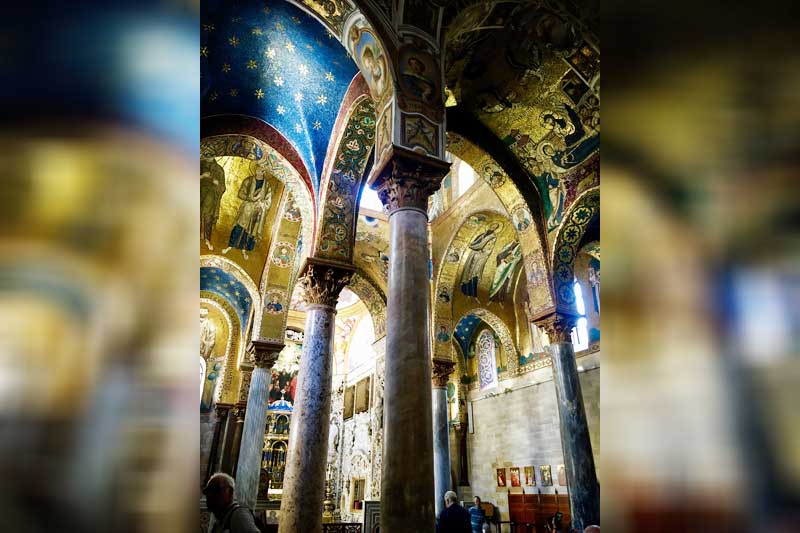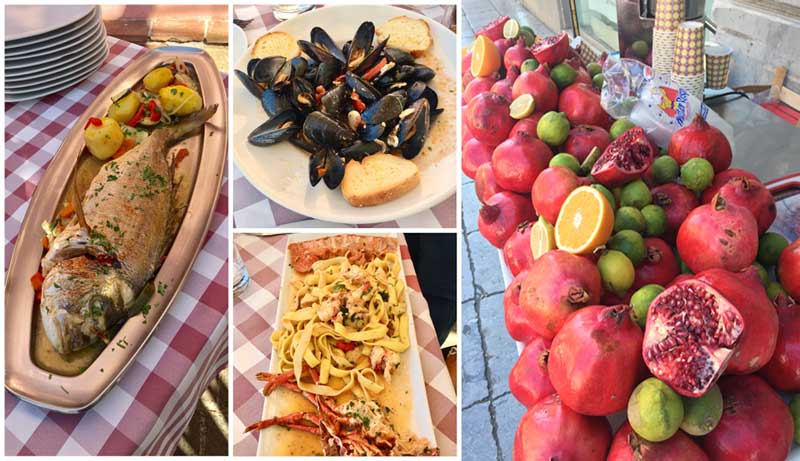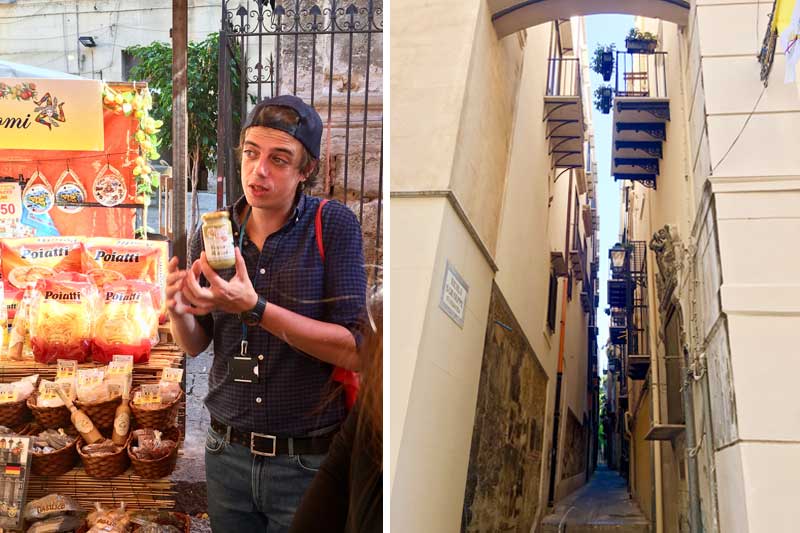Palermo: Perfect Endings

MANILA, Philippines — We were a group of nine exuberant tourists wanting to explore the sights of Sicily, get a feel of its culture, and have a taste of its famed cuisine. And because of the fine weather, we decided that early autumn would be a perfect time to do so.
Early autumn in Sicily is cool with temperatures ranging from 18°C to 24°C, low humidity and great chances of sunny days with clear blue skies. The summer tourists have almost all gone and the remaining ones mingled inconspicuously with the locals.
After five exciting days on the eastern side of Sicily, we were ready for some culinary and religious adventures on the other side of the island. The travel books all said that Cefalù, Palermo and Erice were musts so that’s where we headed.

Magnificent Byzantine mosaics in the interior of La Martorana.
Travel by land from Itala, our home base during our first six days, to Cefalù was a panoramic drive along the Strait of Messina and the Tyrrhenian Sea. We stopped for lunch in Sant’Ambrogio in the outskirts of Cefalù. The place is called Osteria Bacchus, a family-run restaurant with a breezy terrace overlooking the Blue Bay in the Tyrrhenian Sea. On top of the spectacular view, the food is nothing less than scrumptious.
Once we were seated on the terrace, we were not given menus but were instead presented, on large trays, a fresh catch of lobsters and a huge Asian sea bass. “Yes! We’ll take them!” everybody chorused. The two jolly waiters grinned, quite amused by our enthusiasm, and quickly brought the bounty to the kitchen. What came out was a perfect lunch for a sunny, breezy day – mussels cooked in garlic, tomatoes and white wine; fettuccine with lobsters and baked sea bass whose head was not spared by a fish-head gourmand in our group.
Sicilian cuisine is the result of the blending of various cultures that permeated the island during its long colorful history – Greek, Roman, Arab, Spanish and even French. The cooking is therefore not simple, blending various ingredients and spices with seafood that is plentiful in the island. And the result is a varied culinary fare that one cannot get tired of during a 12-day vacation.
Palermo, Sicily’s capital and largest city, is a food paradise if one is adventurous enough. We stayed in a beautiful bed and breakfast hotel called Palco Rooms and Suites. The hotel is simple, clean and decorated with beautiful Sicilian contemporary art. But most of all, it is located at the heart of Palermo, ergo, walking distance from everything of interest.

(Right) A seafood feast at Osteria Bacchus in Cefalu. (Left) Pomegranates, lemons and oranges at the Vucciria market.
On our first day in the city, we hired a local guide, Angelo, who brought us on a 4-hour street food walking tour. Angelo is quite young, maybe 28 years old, but his knowledge of the streets and the food is impressive. He also has a great sense of humor. While pointing to an 18-story building along the way, he says, tongue-in-cheek, “And this is the tallest skyscraper in Palermo that we are all proud of.”
The tour included visits to the bustling Mercato di Capo and Vucciria Market as well as stops at several landmarks. The highlight of the tour was tasting several typical Sicilian snacks – panelle (fritters made from chickpea flour), cazzilli (literally means “little pricks” but are actually potato and cheese croquettes), arancina (deep-fried rice balls), sfincionello (small tomato pizzas), panica meusa (veal lung and spleen sandwich), cannolo (made of tube-shaped pastry dough stuffed with sweet creamy filling), all washed down by granita (semi-frozen orange juice).
Once completed, Angelo issued each one of us a stamped certificate attesting to the fact that we survived the long walk and food adventure. “That’s your passport to anywhere in Palermo,” Angelo proudly proclaimed.
Anywhere in Palermo is charming. Small alleys lined with old apartment buildings so close to each other that balconies almost touch. I imagined scenarios where neighbors from across the alley would easily pass on food or have a lazy chat face to face. The inner districts of the city still have some old buildings with beautiful rococo façades or portals but clearly, one sees signs of neglect and the ravages of time. I was reminded of my long walks in Havana where neighborhoods appeared to have been frozen in time.

(Right) Our street food walking tour guide Angelo. (Left) A narrow alley in the heart of Palermo.
On our third day, we set out for Erice, a mesmerizing medieval walled town sitting on top of the legendary mountain of Eryx. At 750 meters, the view could be giddy in some places and spectacular from other vantage points. One of the main attractions of the town is Sicily’s most famous pastry shop called Pasticceria Maria Grammatico. Maria learned to make pastries in the Convent of San Carlo where she was a novice. For family reasons, she left the convent after 15 years and decided to open a small confectionary shop.
That shop has now become the legendary pasticceria whose myriad of delicious creations epitomize the dolci in Italian life. Most of her pastries are almond-based – pasticcini, genovesi, Seni di Vergine (comprised of almonds, sugar, citrus-flavoured jam) and frutta di martorana (marzipan fruits). Sinful but who cares about calories during vacation?
After the day trip to Erice, we spent the two remaining days visiting the famed churches of Palermo – the Cappella Palatina in the Palazzo dei Normanni, the Cathedral of Monreale in the outskirts of Palermo and La Martorana in the heart of the city. The Cappella Palatina and La Martorana are splendid representations of how Greek Byzantine, Norman and Arab architectural styles, accented by stunning mosaics depicting religious and historical tableaux, have blended beautifully through the ages.

The Giardini del Balio and Castelo di Venere in the medieval town of Erice.
Another impressive church is the Chiesa di Santa Caterina located in the Piazza Bellini just across La Martorana. It is an excellent example of baroque, rococo and renaissance styles in Sicilian architecture. Its interior of mostly marble art is baroque at its magnificence.
Palermo truly beckons with its culinary delights and the visual opulence of its spiritual past. We could not have had a more satisfying end to our Sicilian vacation.
But, sadly, it did have to end.


















